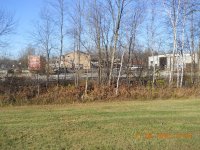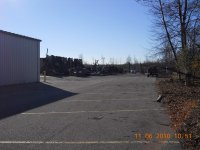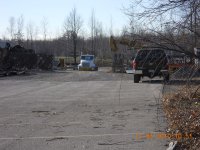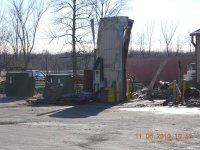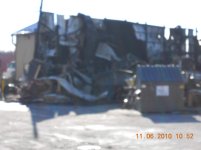sandybeach
Bronze Member
The sheet metal floorboard of my truck has developed stress cracks where the seat bolts through the floor. The truck is a '95 and has more than 200 K miles.
I think the best procedure would be to repair the cracks by welding them. However, I'm open to suggestions on a better way to solve the problem.
While I have done stick welding for decades, I've never used a wire feed (flux core) welder before. Since Santa brought me a wire-feeder, it seems like a good starter project. Still, I plan to practice with some scrap steel before attacking the truck.
Assuming that this approach is a good one, I need some tips, tricks, and traps.
The gas tank is 50"+ away from the damage; there are no fuel lines in the vicinity. Also, both of the truck's frames are between the damaged area and the fuel line.
Even given that distance from the fuel tank and lines, is this idea still too dangerous?
It's 16 ga steel. I've wire-brushed down to bare metal. I've also stop-drilled the cracks to keep them from getting worse. What diameter flux-core wire should I use? I have the .030 wire that came with the welder.
It's hard - or impossible - to apply a ground clamp to the floorboard. 2 possibilities:
Or both repair the cracks and apply patch (bolted or welded).
Or ??? I'm open to other ideas.
I think the best procedure would be to repair the cracks by welding them. However, I'm open to suggestions on a better way to solve the problem.
While I have done stick welding for decades, I've never used a wire feed (flux core) welder before. Since Santa brought me a wire-feeder, it seems like a good starter project. Still, I plan to practice with some scrap steel before attacking the truck.
Assuming that this approach is a good one, I need some tips, tricks, and traps.
The gas tank is 50"+ away from the damage; there are no fuel lines in the vicinity. Also, both of the truck's frames are between the damaged area and the fuel line.
Even given that distance from the fuel tank and lines, is this idea still too dangerous?
It's 16 ga steel. I've wire-brushed down to bare metal. I've also stop-drilled the cracks to keep them from getting worse. What diameter flux-core wire should I use? I have the .030 wire that came with the welder.
It's hard - or impossible - to apply a ground clamp to the floorboard. 2 possibilities:
- clamp to a nearby steel part that is factory spot-welded to the floor
- tightly install a bolt in a hole that's a few inches away, and clamp to the bolt
Or both repair the cracks and apply patch (bolted or welded).
Or ??? I'm open to other ideas.
Last edited:



